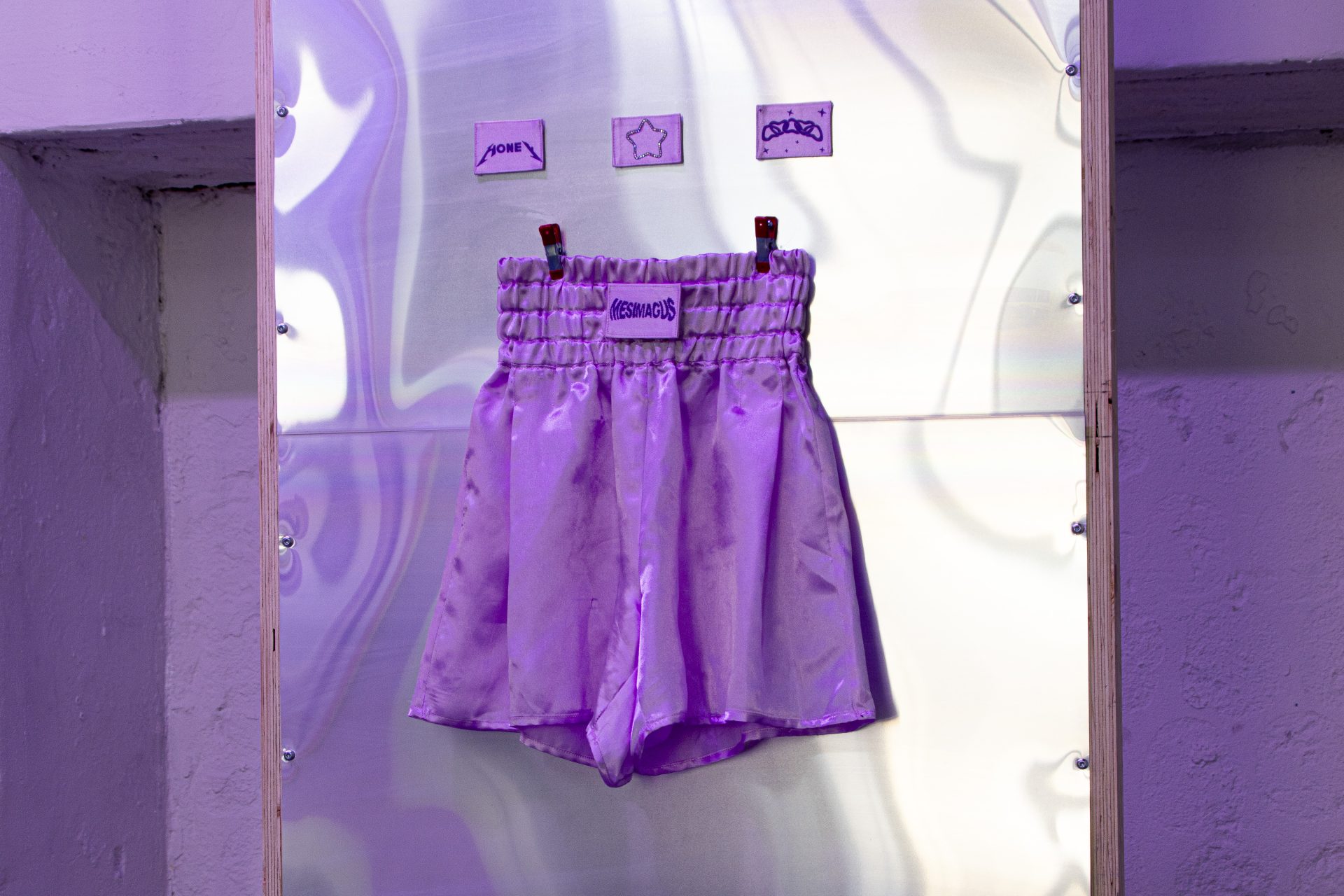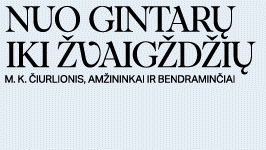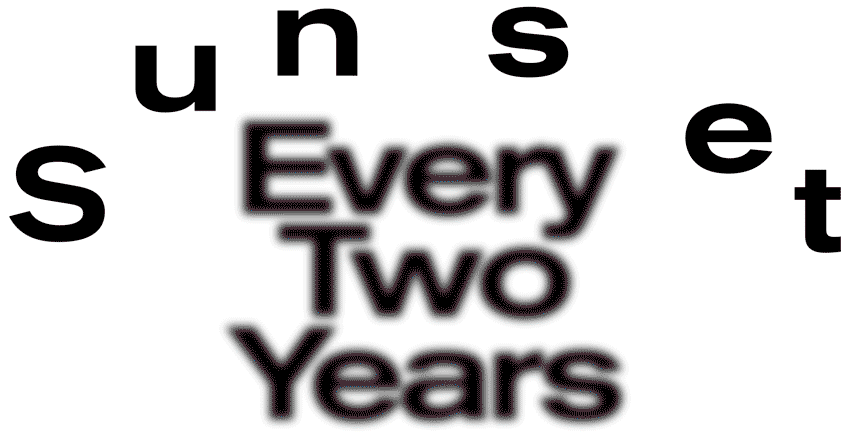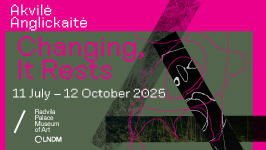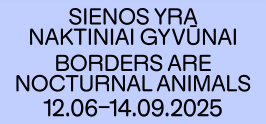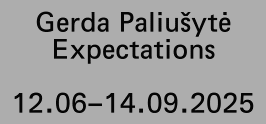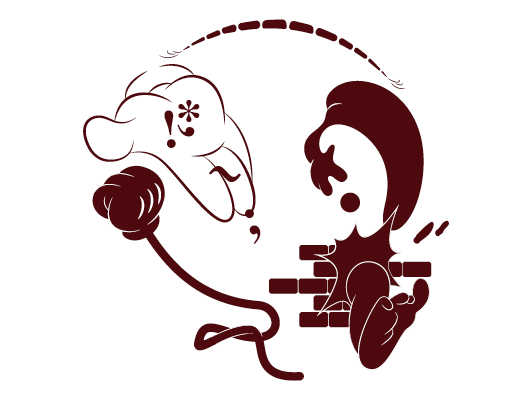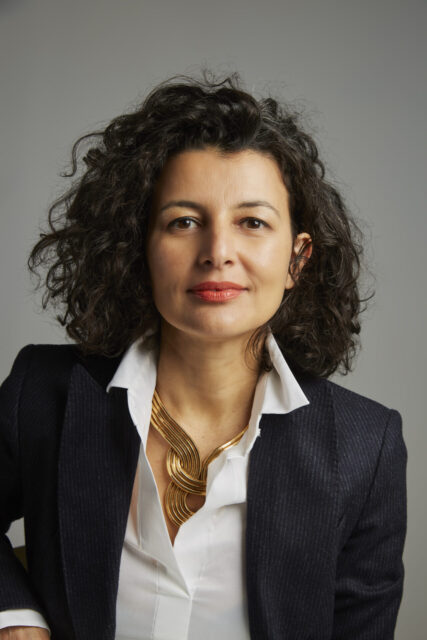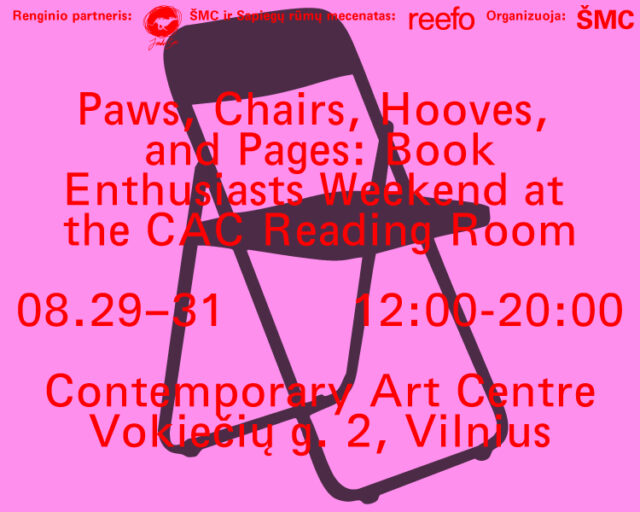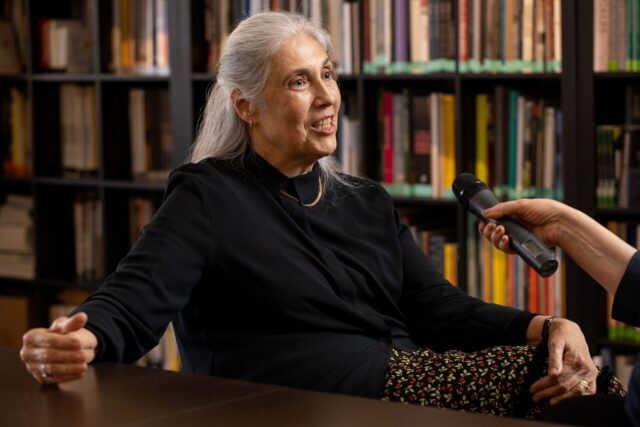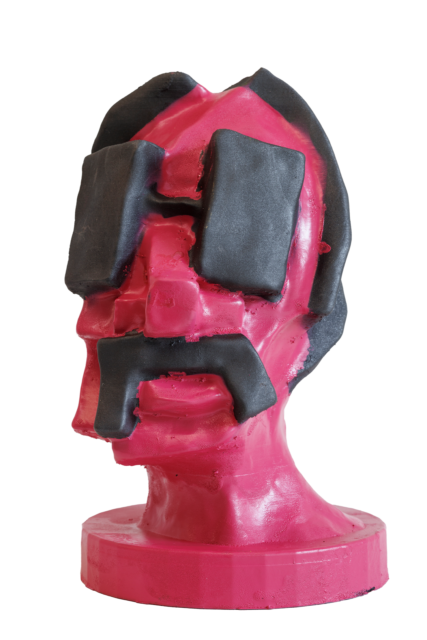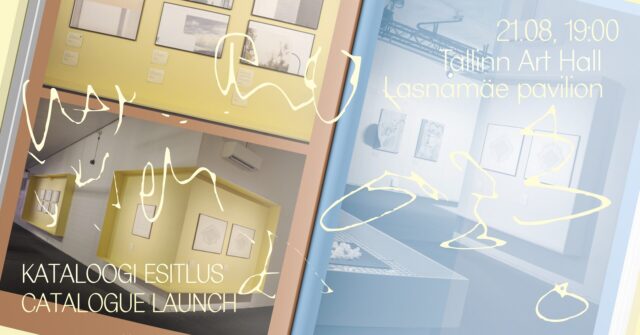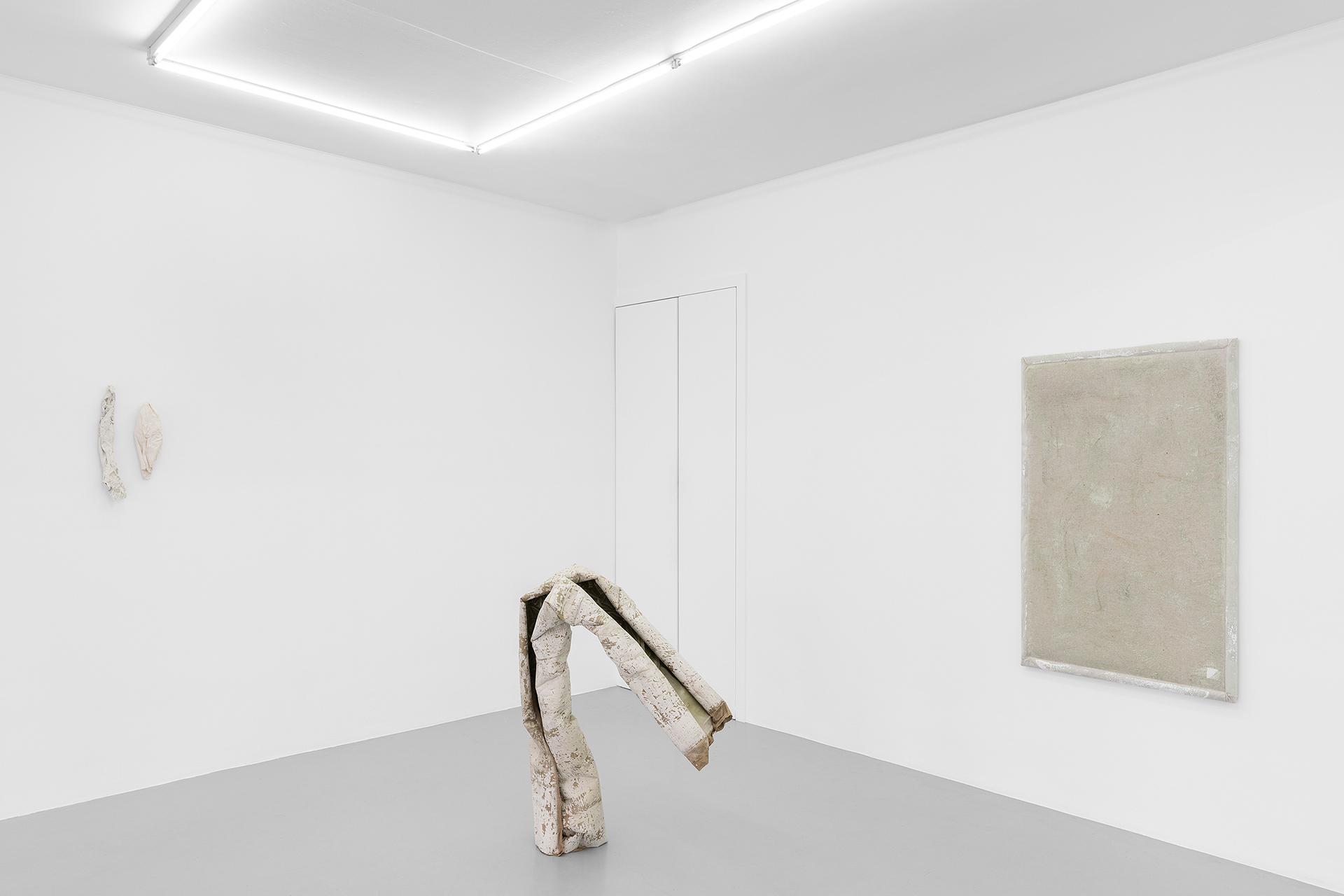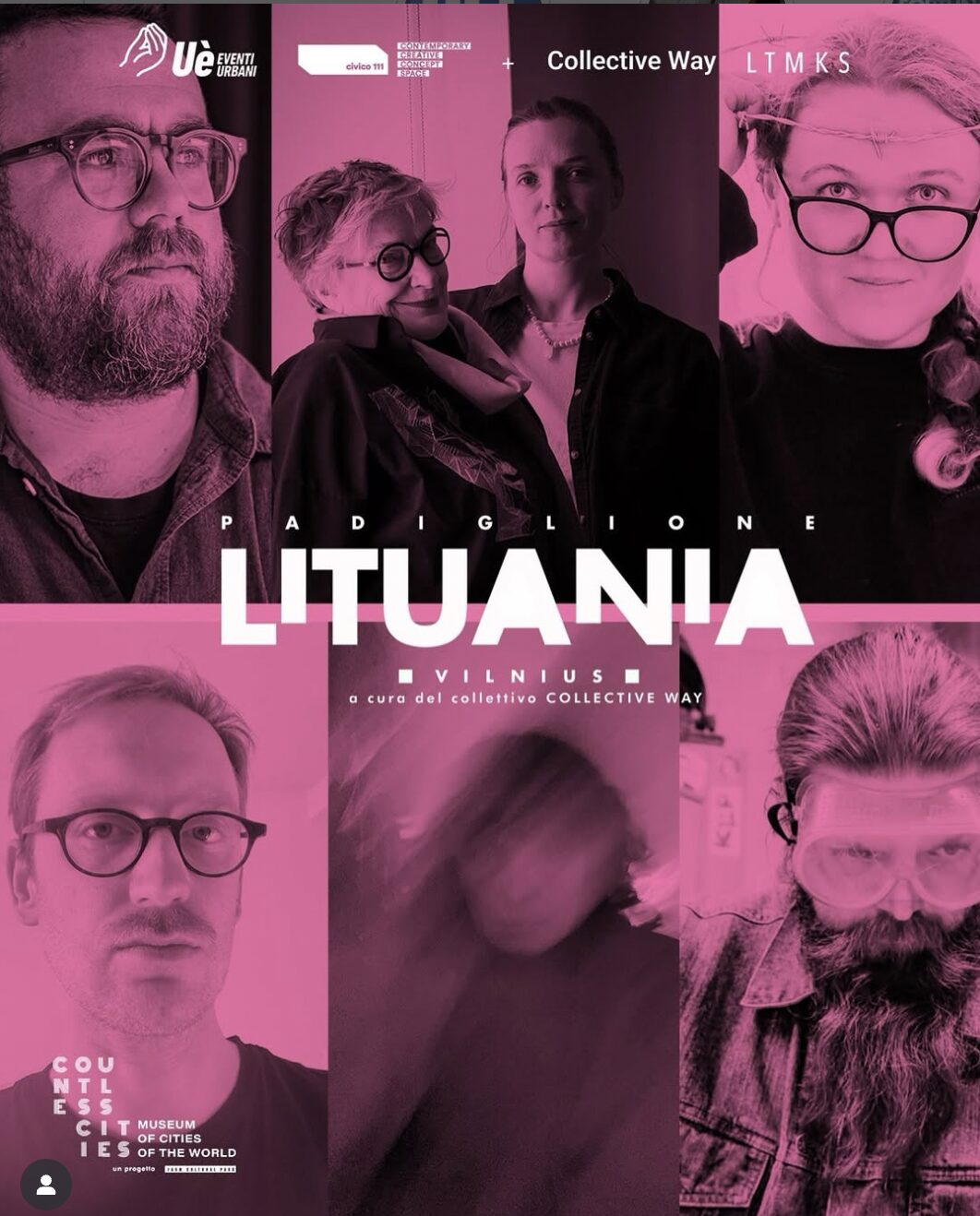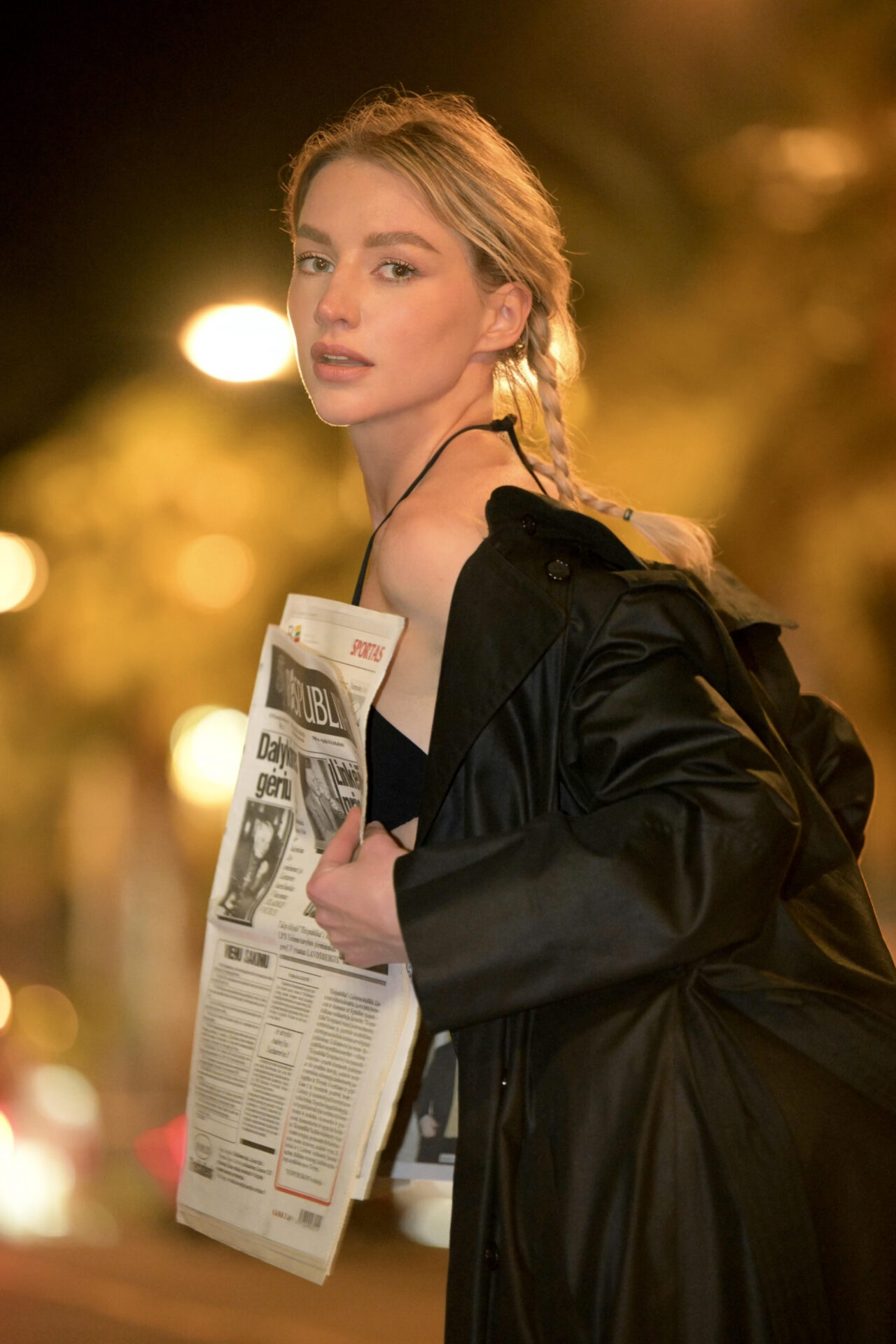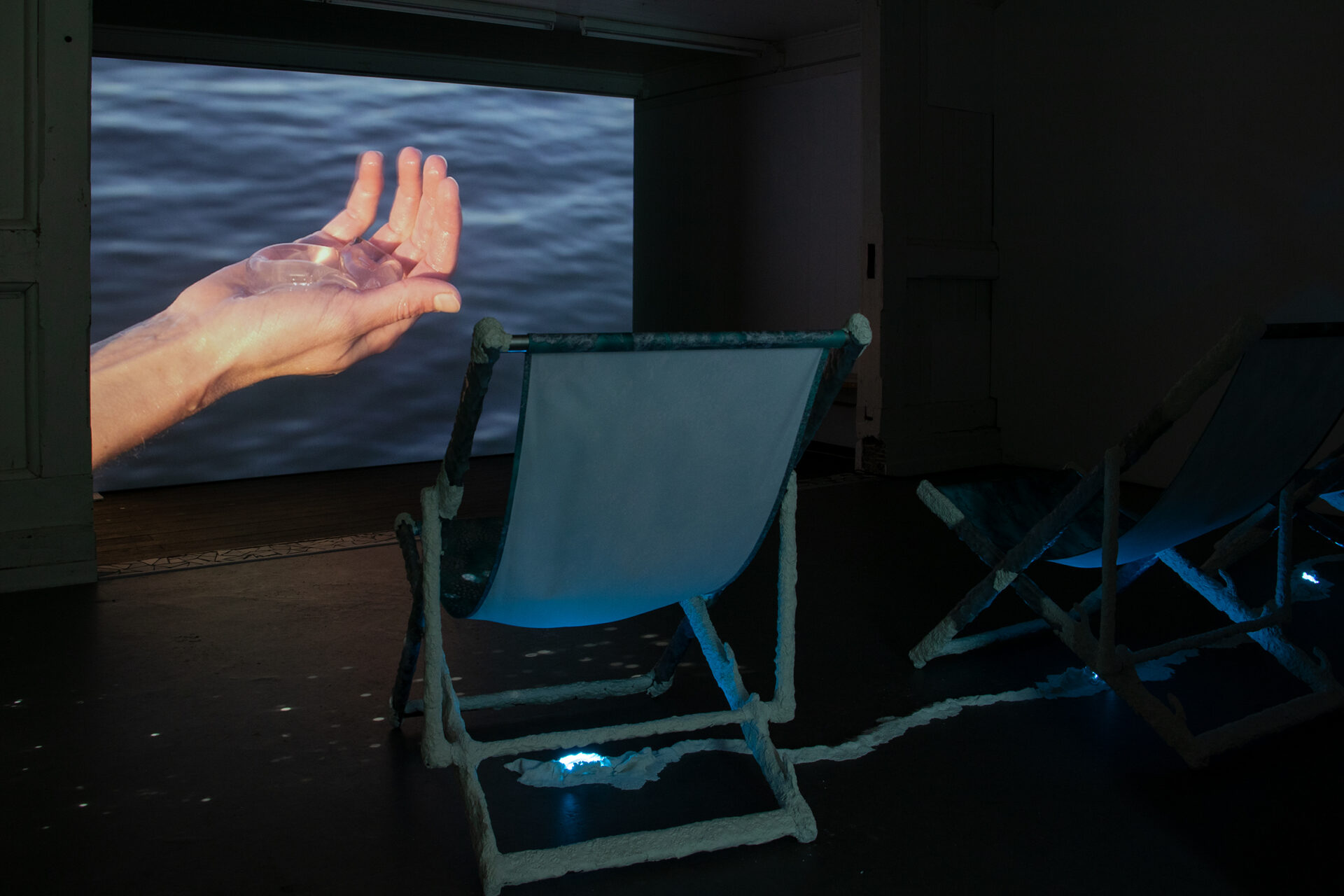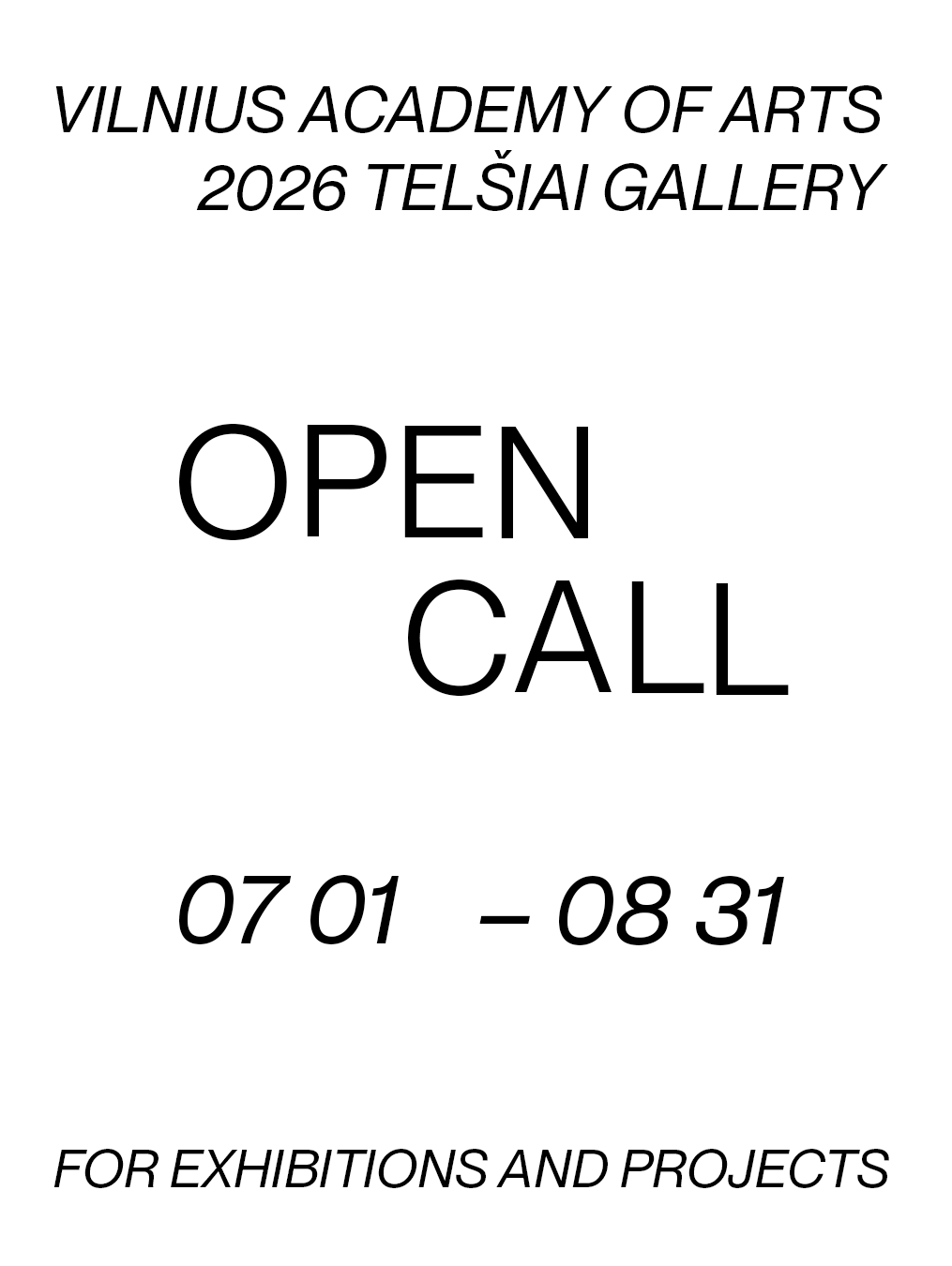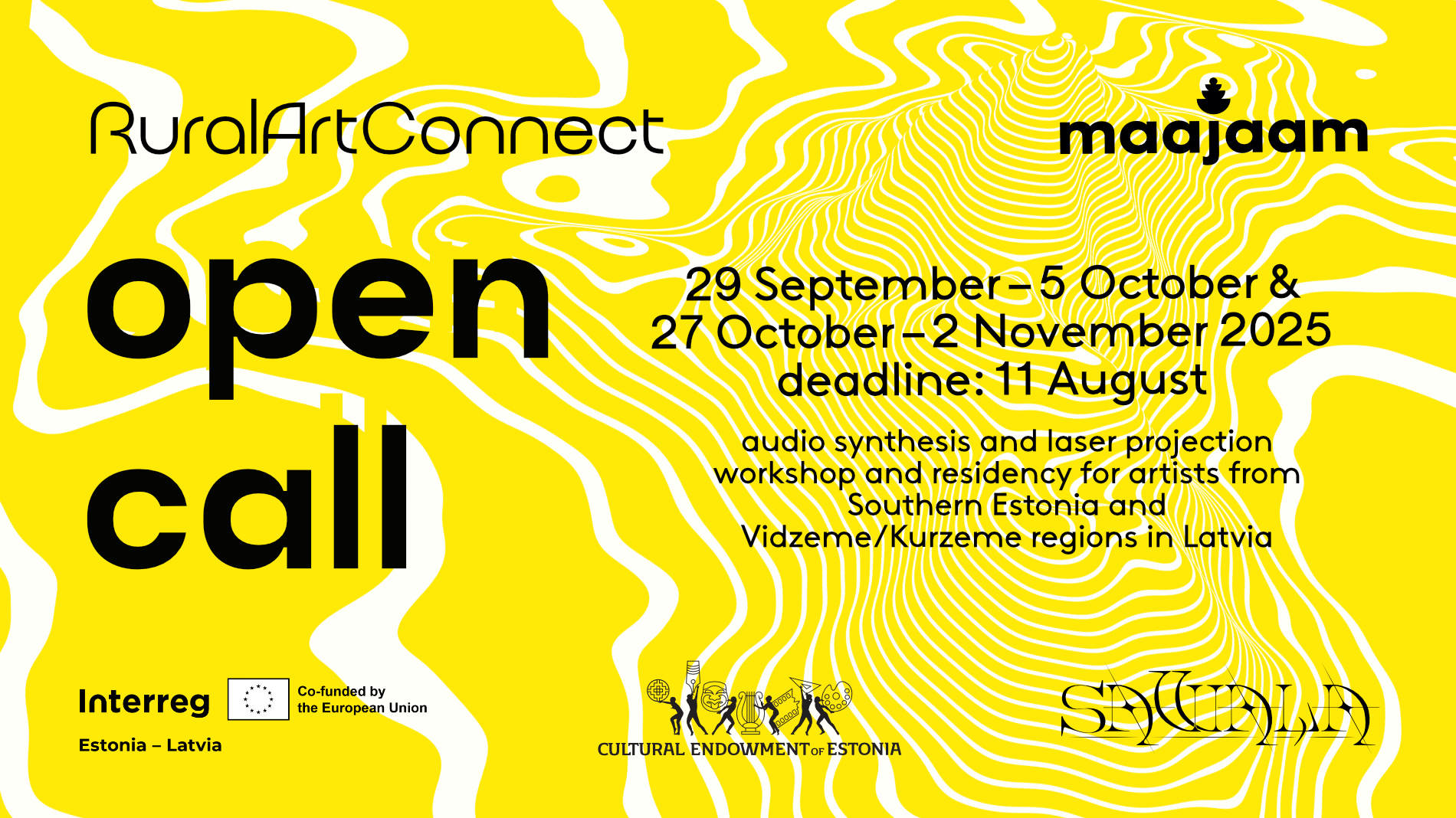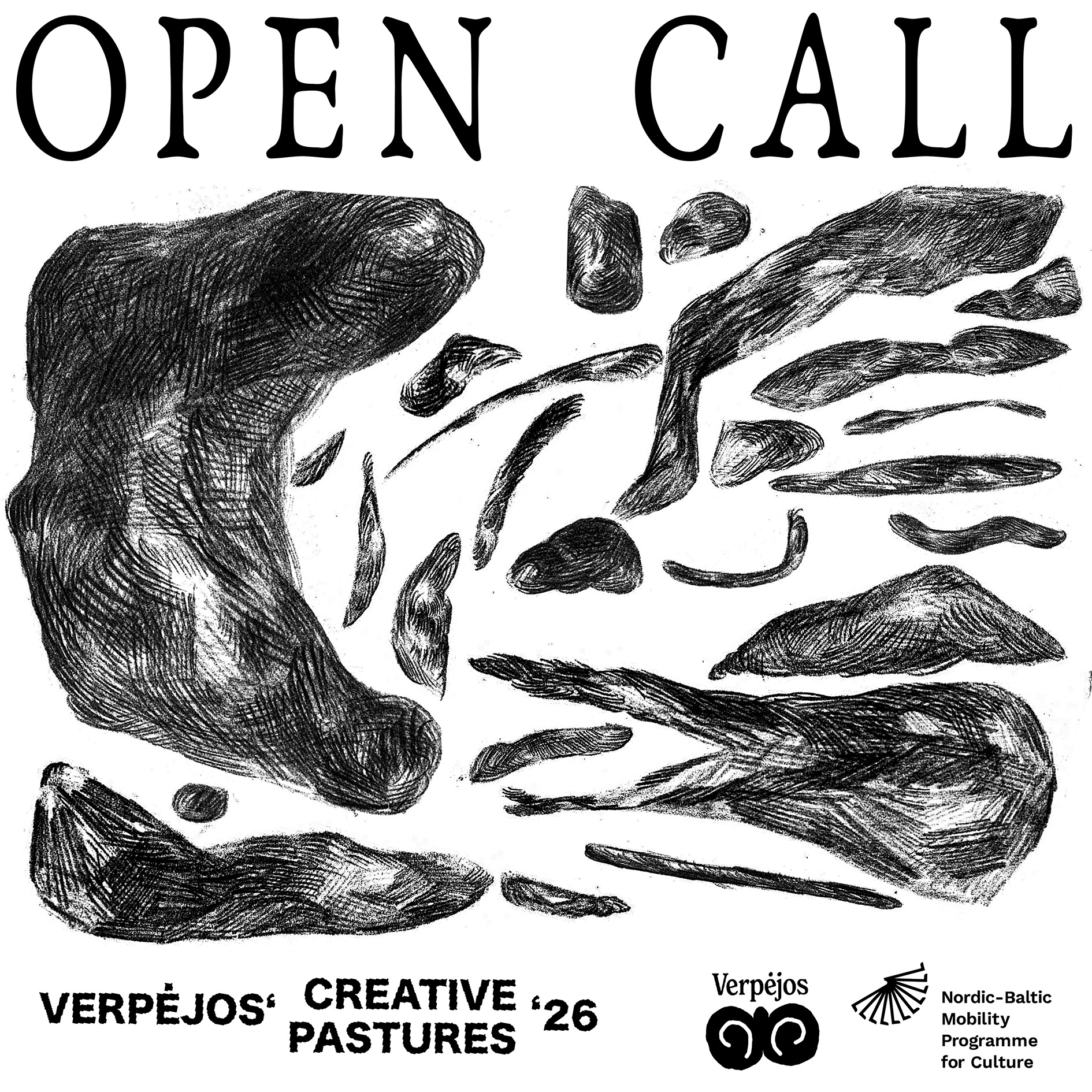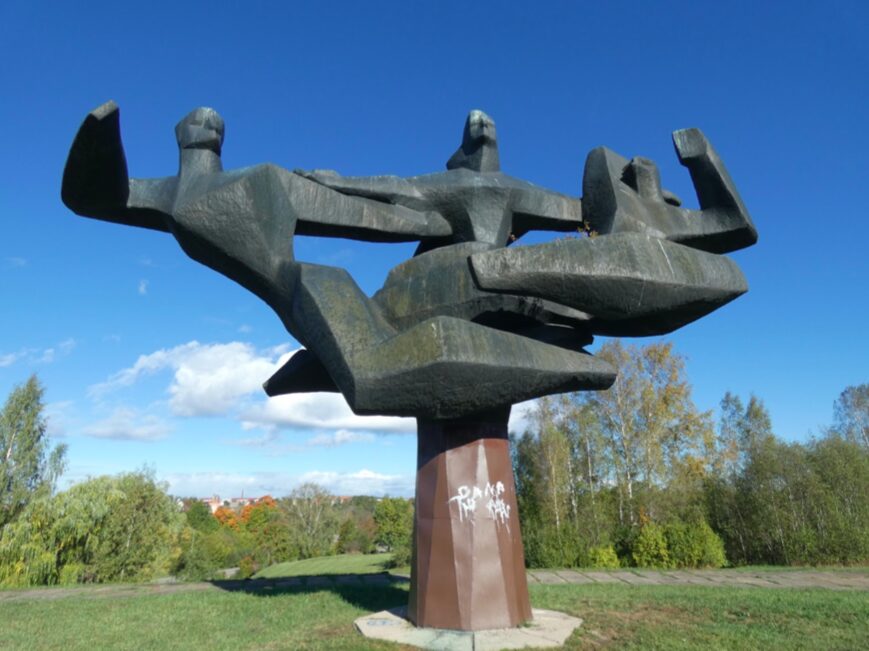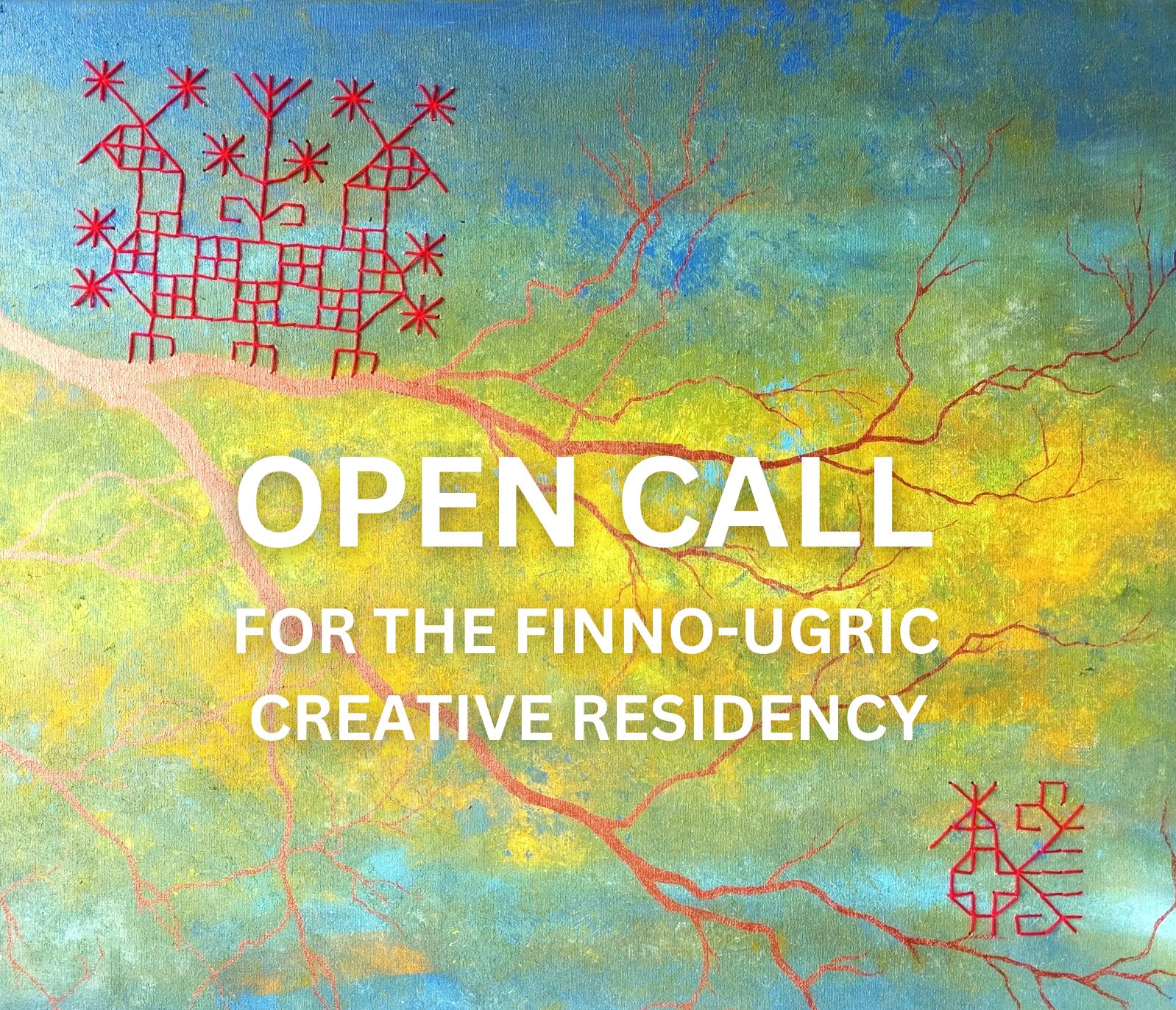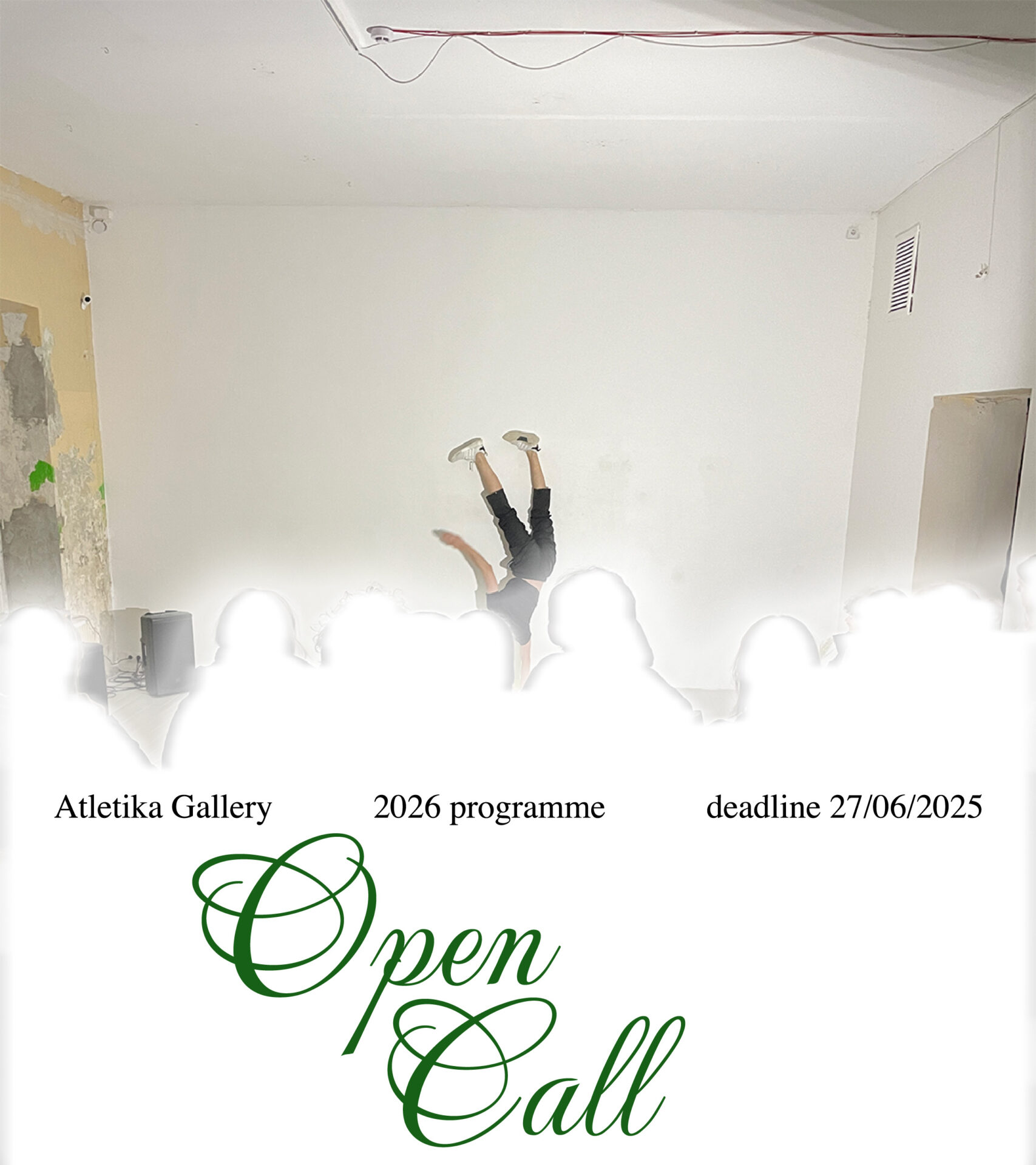On entering any space, my first instinct is to scan it: a silent mapping of potential threats and hidden beauties, decoding its cherished and punished identities, seeking a place for the ‘I’ to fit in. A creature of habit, shapeshifting to merge. A specimen of evolution, driven by self-preservation.
At Maria Izabella Lehtsaar’s Bruised Lilac in the basement hall of Tallinn’s Kanuti Guild Hall, lilac whispers from nearly every object, a hushed song in shades of light purple. Hilde greets me with a smile and a chocolate, which we break and share, laughing, our teeth stained brown. The defences soften. I think it’s safe to let our guard down.
Boxing shorts, gloves and bandages, crafted not from leather but from soft silk and velvet, stuffed with foam rubber, challenging the traditional image of the sport. The usual associated roughness is replaced by a surprising tenderness, the potential for violence subverted by the delicate nature of the materials. Metallic chains and cold surfaces hang alongside velvet chains plump with cotton, creating a visual and tactile dialogue. There’s a treasure box, delicate, girly and precious, a miniature world of the sport: in it a tiny velvet boxing ring, diminutive gloves, all arranged with a childlike care that belies the seriousness of the ritual they represent.
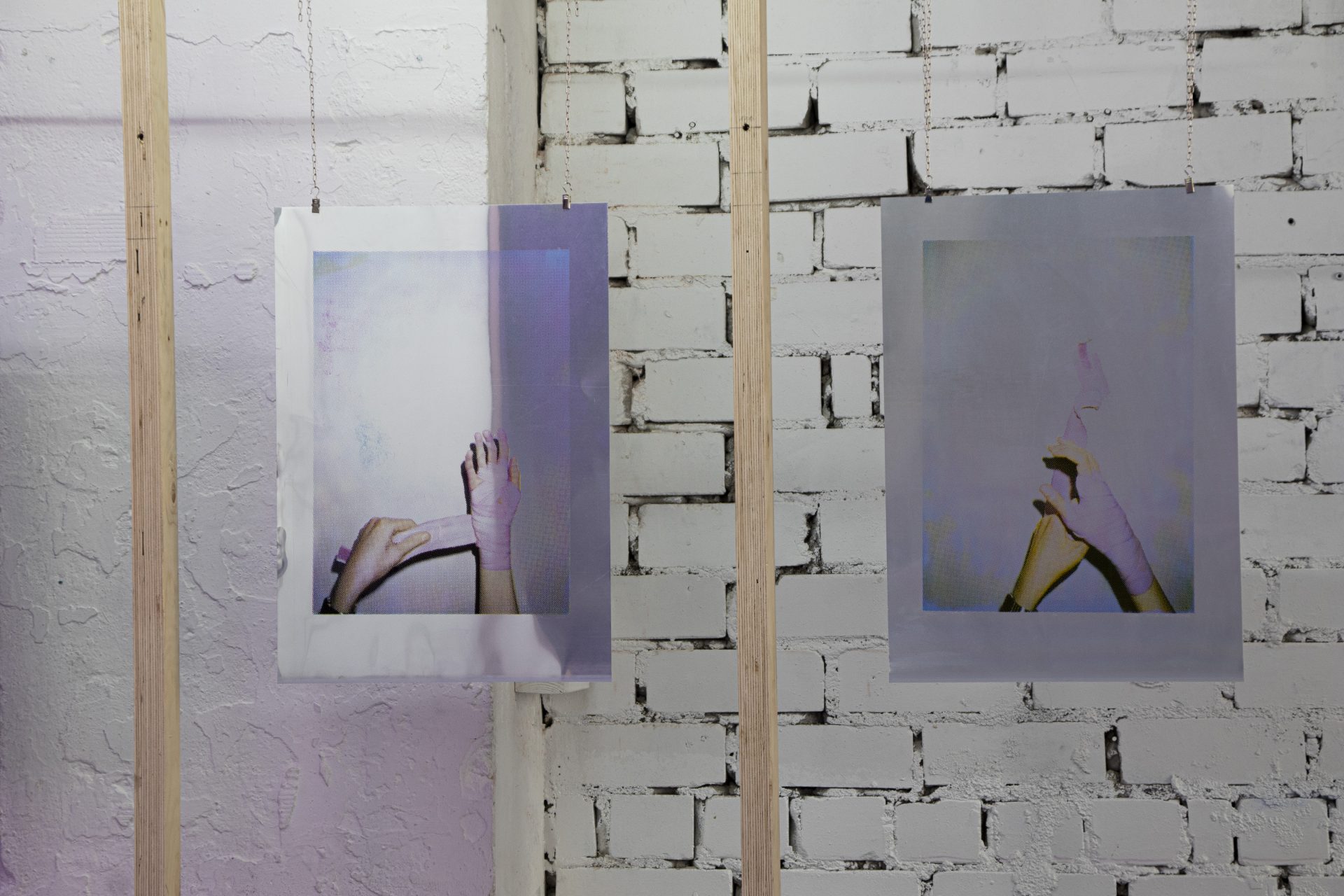
Maria Izabella Lehtsaar, Bruised Lilac, Tallinn’s Kanuti Guild Hall, 2024. Photo: Kertu Rannula
‘What does lilac mean to you?’ Hilde asks.
‘It’s gay,’ I offer. ‘But also the colour of wildflowers gathered for Mother’s Day. A colour reclaimed, embraced in my early twenties after years of shame for being “too girly”, too sensitive. It’s the hue of a bruise on his abdomen, a testament to violence against those who refuse to conform. The colour of a stuffed pony, once blissfully unaware of gender.’
Across the room, there’s a nasty blue gym mat in the corner. I know its sweaty, rubbery smell, the scent of 25 compulsory push-ups under the judging gaze of ten-year-old classmates. The shrill whistle declares time’s up: you’re too slow. Toes touch the mat too late, a hula hoop clatters to the floor, my coordination shattering with it. The smell of shame, imprinted before I had words to name it. It still lingers, no amount of scrubbing can erase it entirely. Does the scent of soap ever truly conquer that hint of imprisonment?
The blue mat is a battlefield of ‘right’ and ‘wrong’ physicality, where femininity and masculinity are rigid binaries. Nothing flows, nothing grows. Winners and losers etched in the cold rubber, one leaving with a trophy, the other beaten to lilac. Strength or weakness: no ambiguity allowed. Emotions are the loser’s domain, tears a slow drowning, leading to societal expulsion. The blue mat births the universe’s alpha males, promising them a kingdom of untouchability.
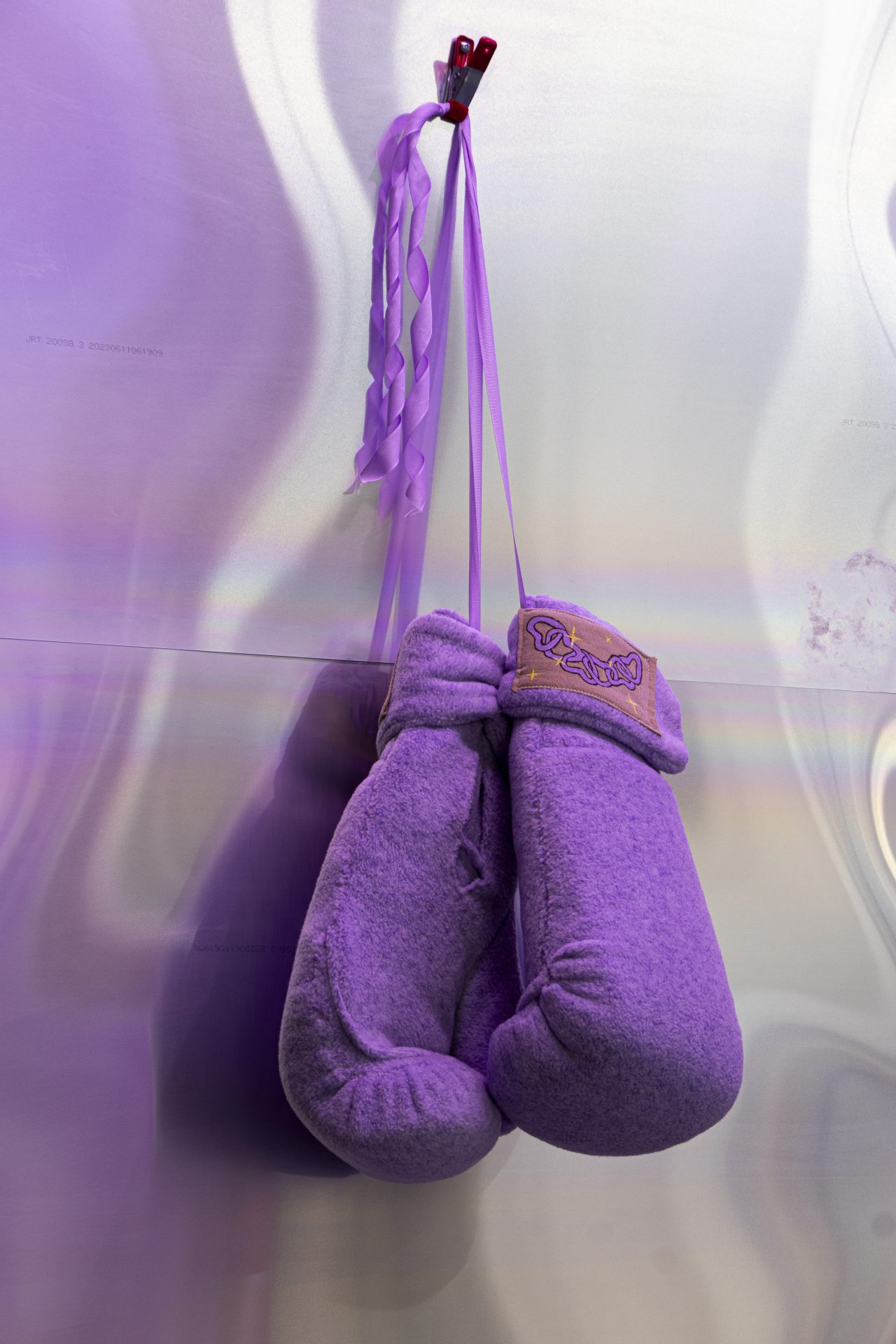
Maria Izabella Lehtsaar, Bruised Lilac, Tallinn’s Kanuti Guild Hall, 2024. Photo: Kertu Rannula
The curatorial text reads: ‘Boxing is inherently violent, hypermasculine and deeply performative. Violence is central to a patriarchal society, and boxing as a sport enables it to normalize and celebrate this through carefully constructed rules, chosen attire and choreography […] Maria Izabella Lehtsaar explores the common ground between boxing and gender performance. According to stereotypical gender norms, boxing symbolises everything that one must not represent when growing up as a girl in society. Both boxing and gender conformity involve violence: it can be painful to force oneself to adhere to societal expectations, and failing to conform to these expectations often leads to punishment.’
The Paris 2024 Olympic boxing epitomised these dynamics. Gender became a fight preordained for loss. Anyone outside the cis-hetero-male norm – puff, towering, easy to categorise – is ultimately deemed ‘wrong’. Too girly? No place for you. A ‘woman’ who doesn’t perform femininity according to the binary? A fool, a fraud. Those threatened by ambiguity cling to self-righteousness, wielding language as a weapon against any whose performance of gender challenges their own.
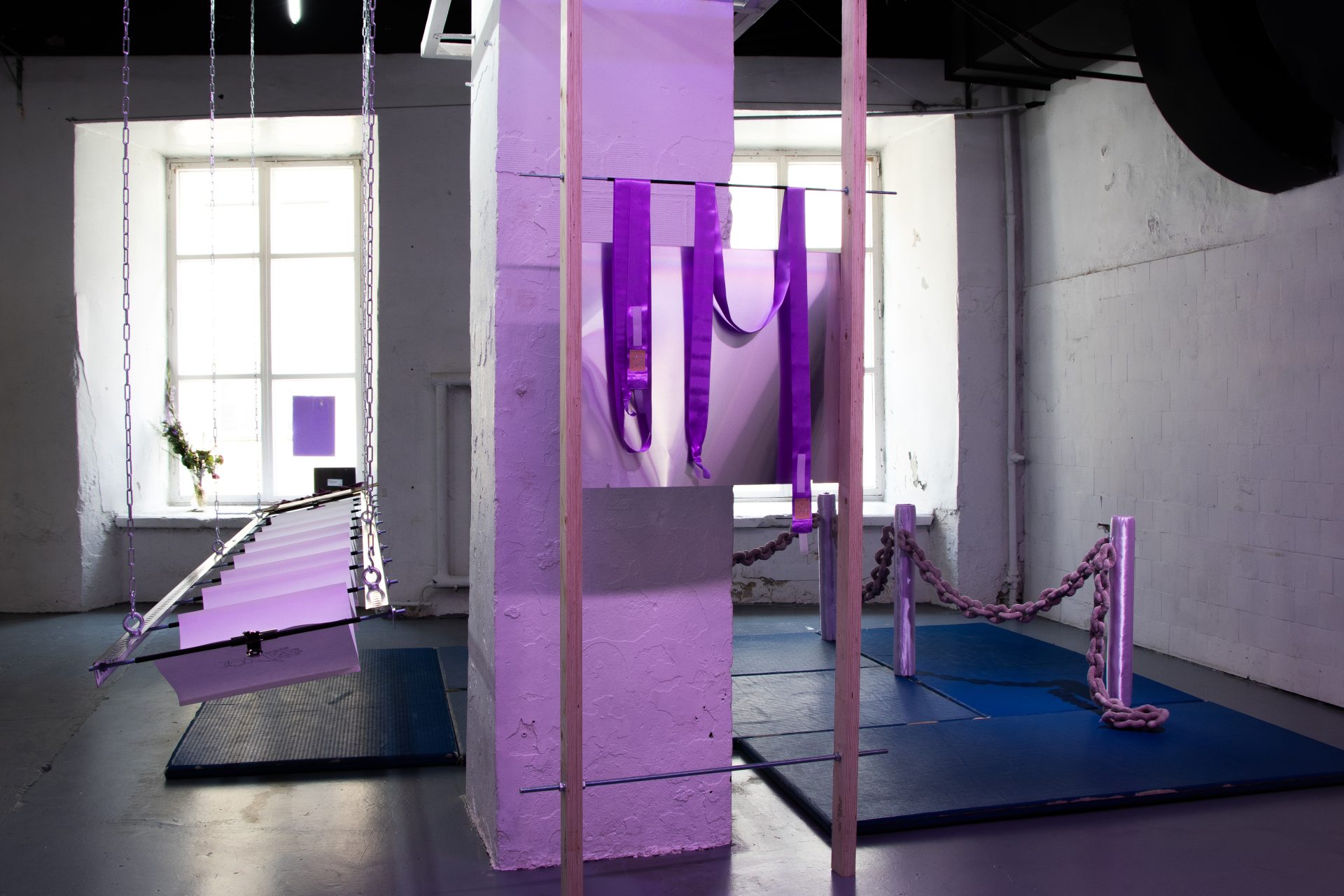
Maria Izabella Lehtsaar, Bruised Lilac, Tallinn’s Kanuti Guild Hall, 2024. Photo: Kertu Rannula
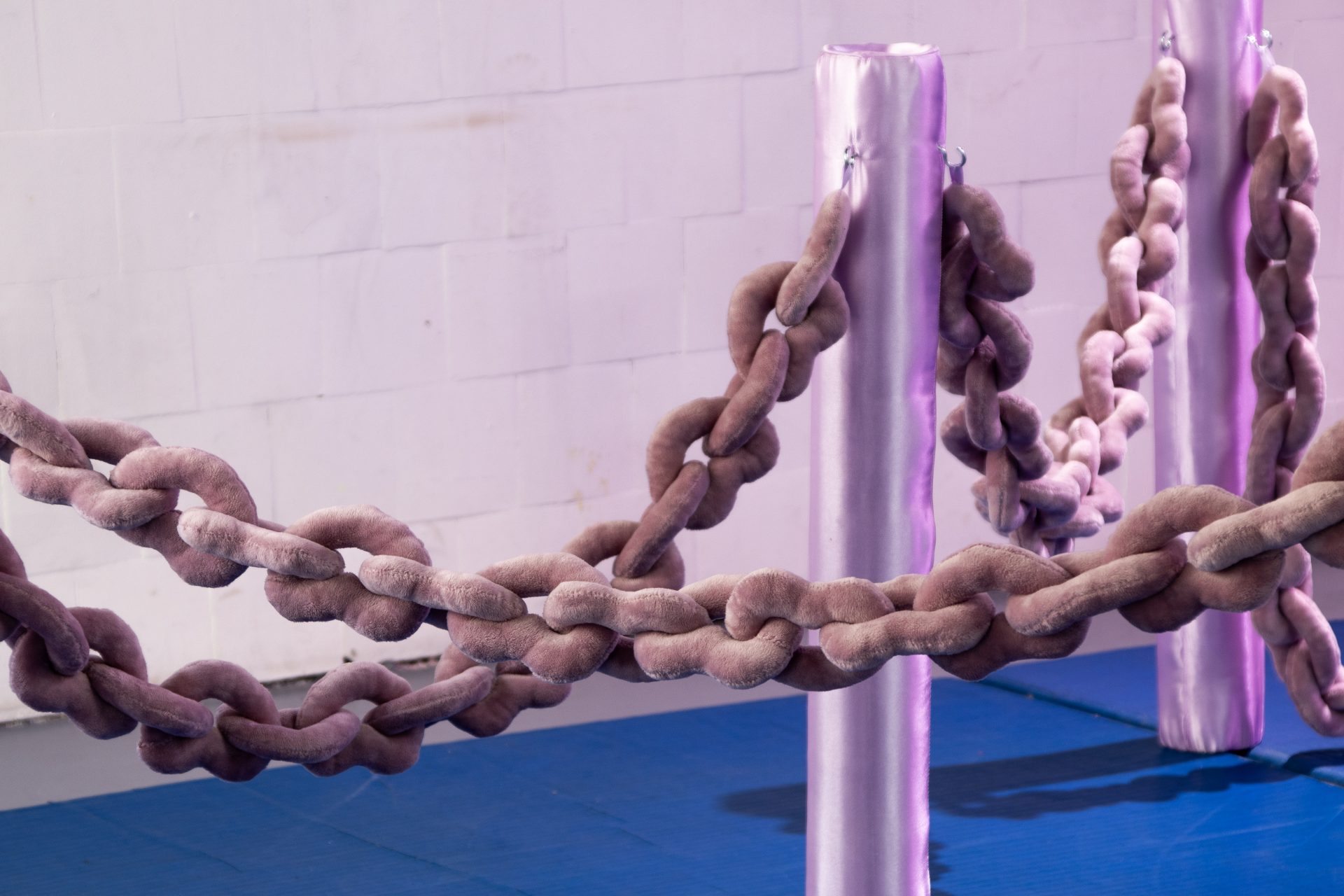
Maria Izabella Lehtsaar, Bruised Lilac, Tallinn’s Kanuti Guild Hall, 2024. Photo: Kertu Rannula
What if Barbie was a boxer, though? Feminine, cute and harmless, giggling while punching the air, never having heard of war. Her heels, unbreakable, forged from the material of pure innocence, nothing in the world can disturb them. In this lilac room, boxing’s tools are transformed into harmless accessories, drained of their function. The commercial capitalised aesthetics guarantee the future of never-ending happiness.
Kitsch becomes a sanctuary, transmuting the violence of rigid stereotypes into self-irony. The lilac monotones and straightforward forms conceal the mazes and nuances of queer experience. Those unversed in the secret language, blind to the queer codes, will never find the hidden depths. These forms, seemingly void, are brimming with lived experience: vessels of tenderness, camouflaged from the outside gaze.
Tenderness lies at the heart of queer experience: a yielding, a staying-soft in the face of relentless pushing and pulling, this constant pressure. The goal is not a diamond-hard invulnerability, but something more earthy, more humble, less defined: something found in the shared space of ‘us’. Queer existence thrives not in the singular ‘I’, but in relation, in vulnerability, in the openness of tears.
In this space of self-aware sincerity, the belief in Love despite the horror, I imagine a boxing ring reborn: a lilac trampoline, bouncy and queer, a celebration for our everlasting re-birthday. Come, sister, rest with me. I’ll kiss away the lingering taste of old blood: the bitterness of deceit and paranoia, the sting of manipulation. Let us surrender to the softening embrace of lilac. Let us once again become tender.
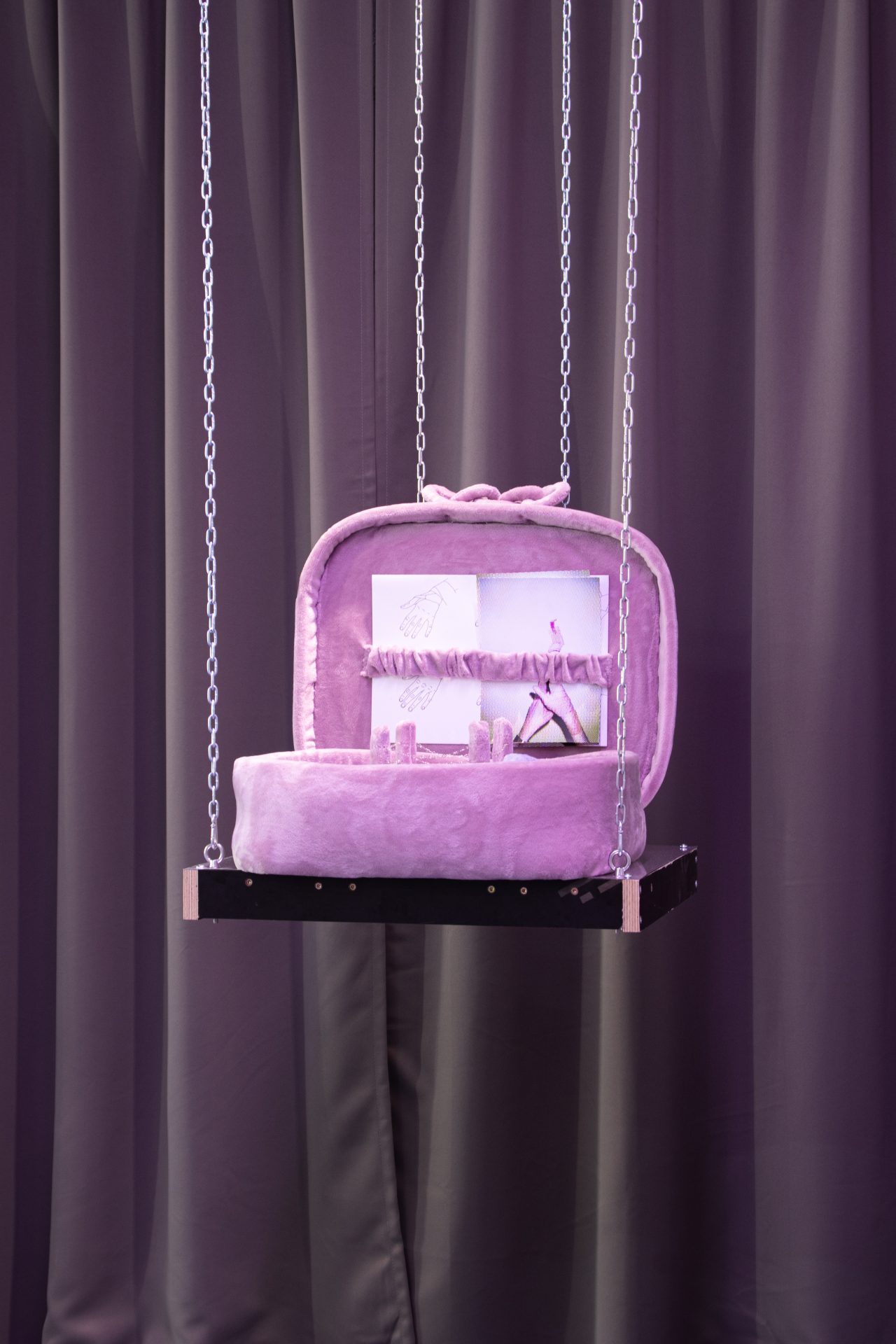
Maria Izabella Lehtsaar, Bruised Lilac, Tallinn’s Kanuti Guild Hall, 2024. Photo: Kertu Rannula
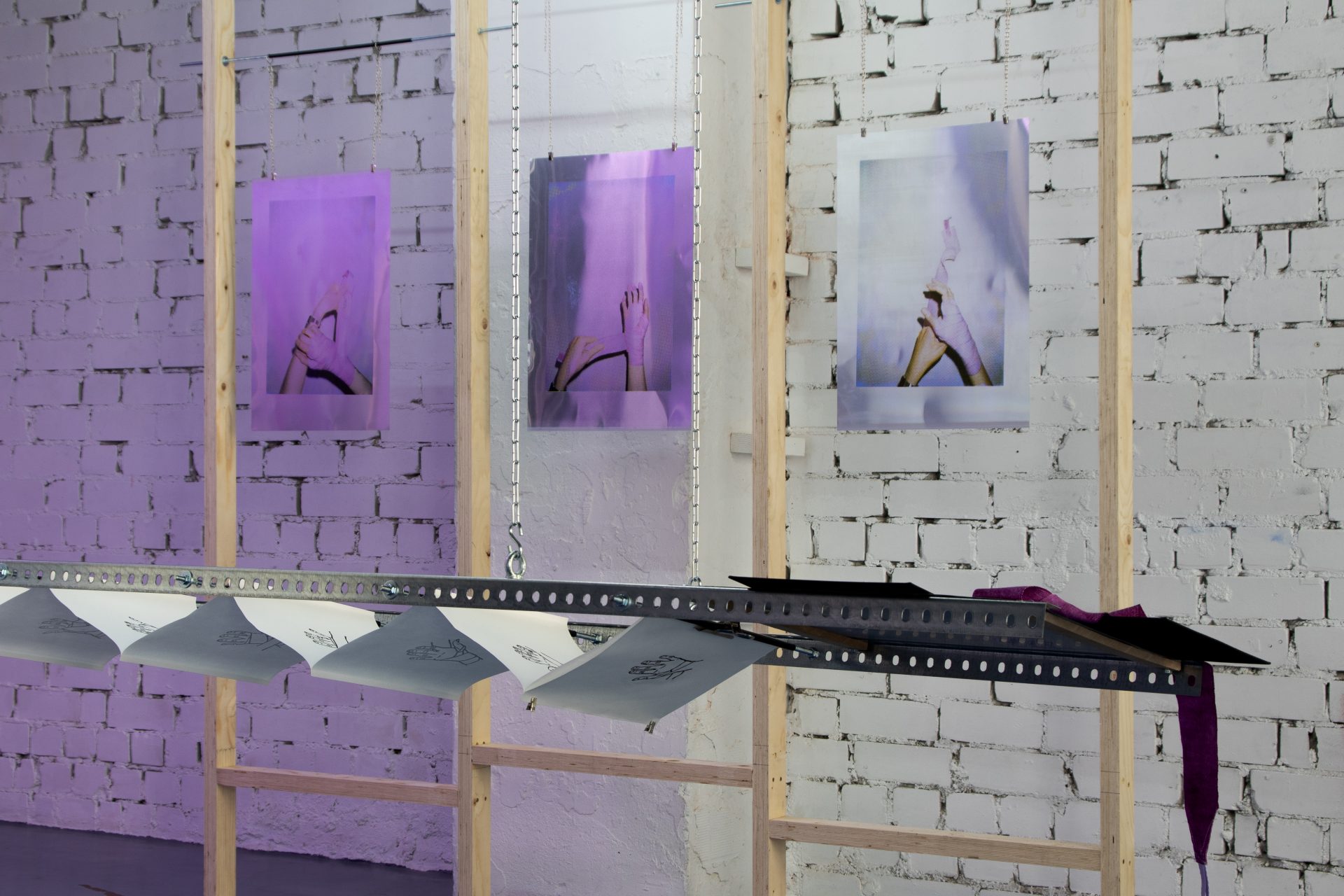
Maria Izabella Lehtsaar, Bruised Lilac, Tallinn’s Kanuti Guild Hall, 2024. Photo: Kertu Rannula
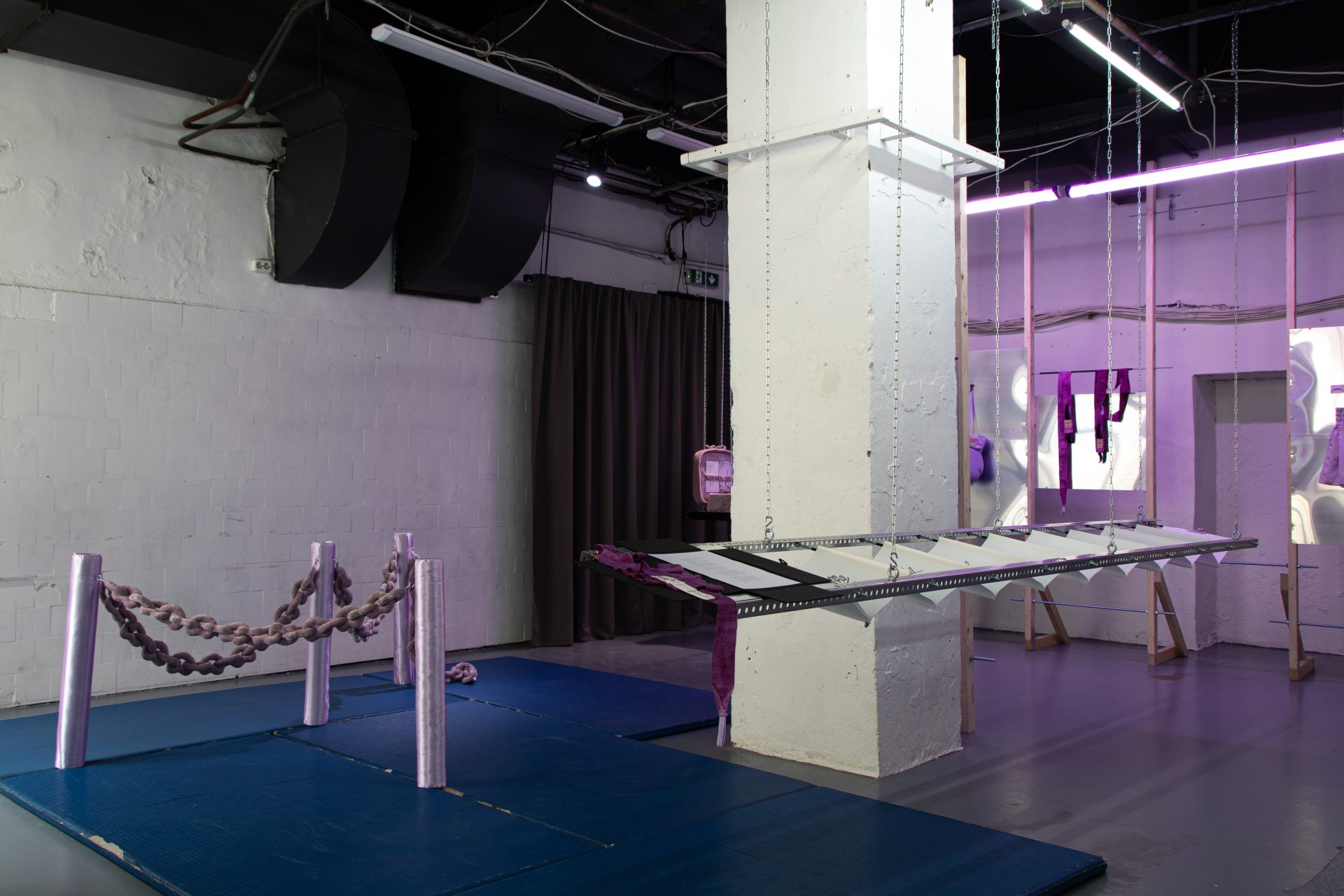
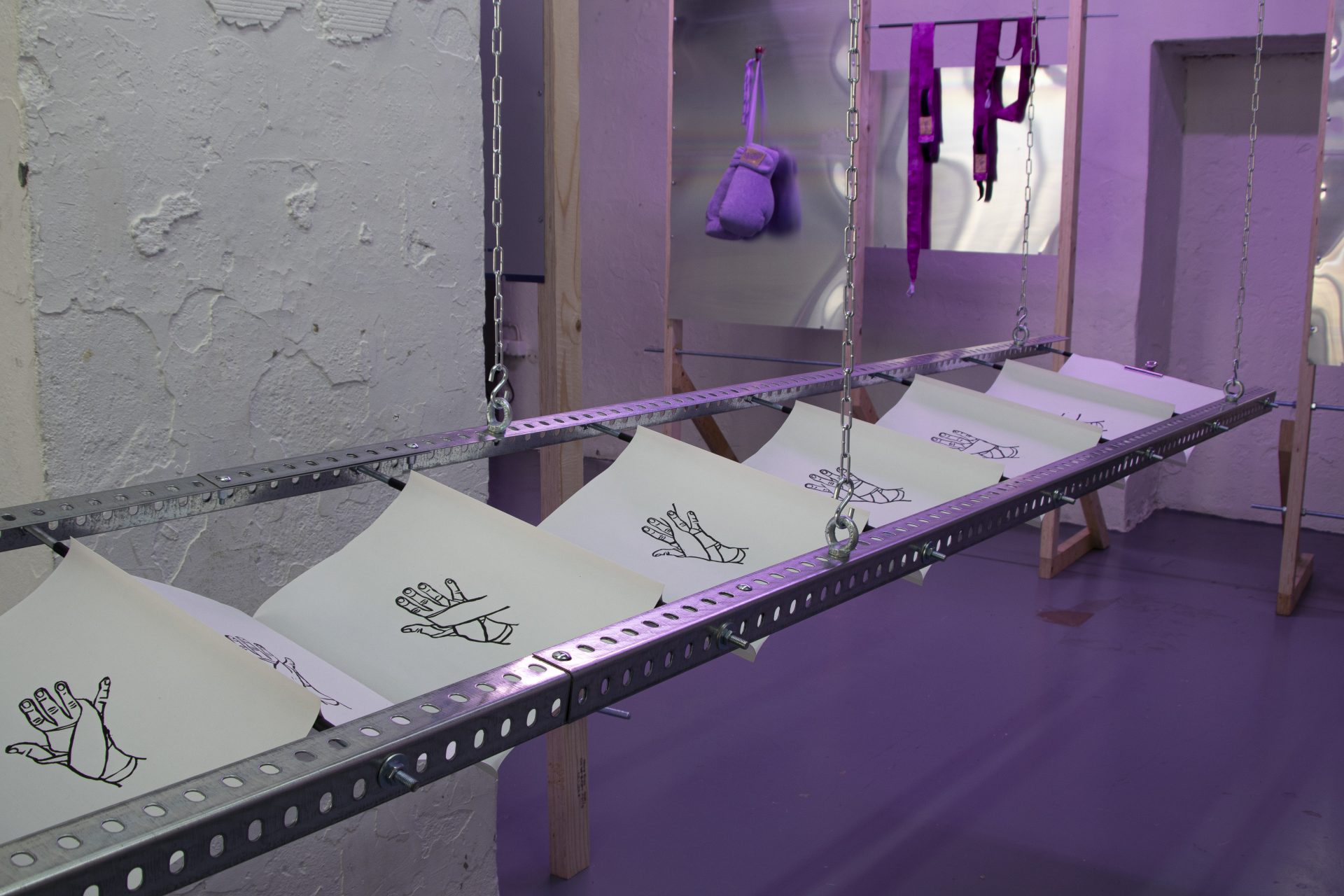
Maria Izabella Lehtsaar, Bruised Lilac, Tallinn’s Kanuti Guild Hall, 2024. Photo: Kertu Rannula
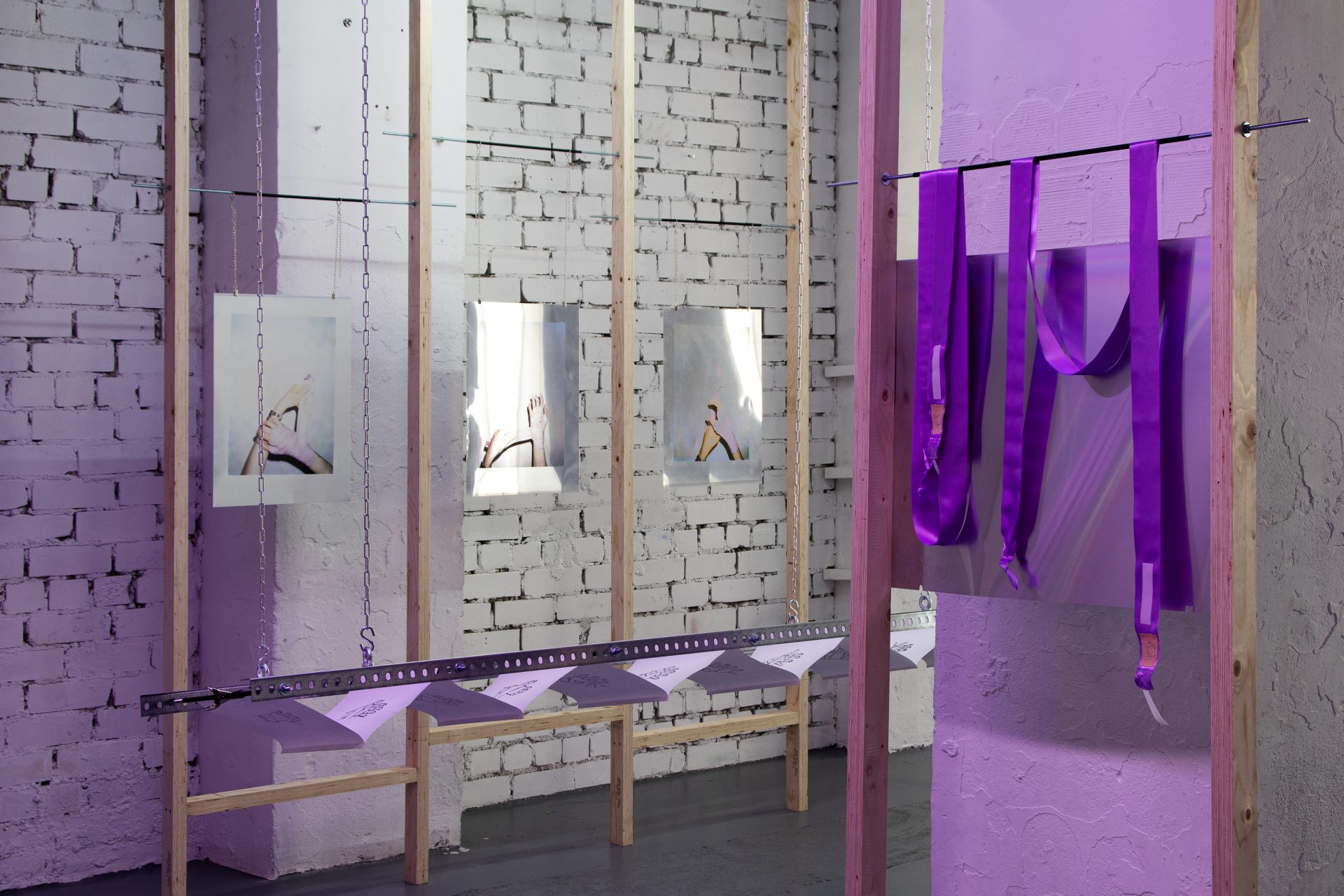
Maria Izabella Lehtsaar, Bruised Lilac, Tallinn’s Kanuti Guild Hall, 2024. Photo: Kertu Rannula
Maria Izabella Lehtsaar’s solo exhibition ‘Bruised Lilac’ ran from 21 August until 6 September 2024 in Keldrisaal at Kanuti Gildi Saal, Tallinn, Estonia.
Exhibition team:
Artist Maria Izabella Lehtsaar (they/them)
Curator Mikk Lahesalu (they/them)
Workshop conductor Nadya Tjuška (they/them)
Exhibition designer Riin Maide (any/all)
Graphic designer Agnes Isabelle Veevo (she/her)
Editor Emilia Kõiv (she/her)
